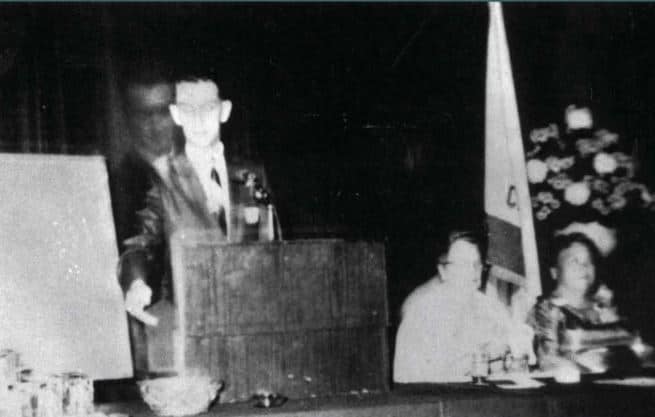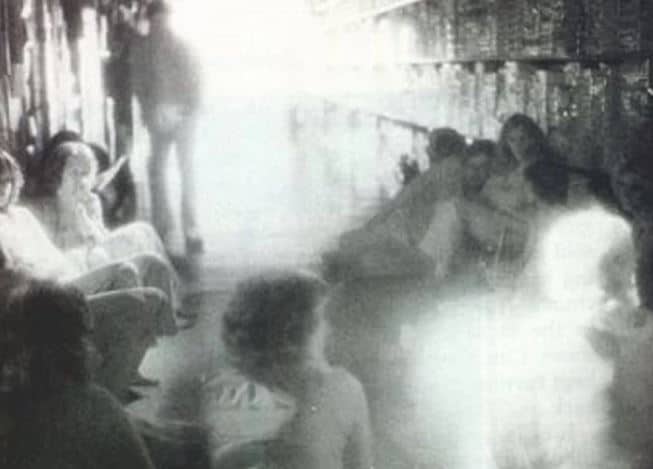Okay. so I ask what’s the deal with ghosts???? I may be wrong, but my guess is that you’re probably reading this in the hope I’ll tell some cool ghost stories. More than that, I’ll add the customary showmanship to the stories. But wait. I’ll give you the real scoop right off the bat: there isn’t a single ghost story in this article, and I warn you that I’ll probably sound a little nerdy. Sure I’m interested in ghosts, but this interest has a lot to do with a sincere desire to understand what ghosts are and how we humans can study them.
Human Consciousness and Ghosts
If the bitter truth is known, I’m going to talk a bit about how human consciousness and ghosts have quite a bit in common. Yes, I admit to being biased toward believing that ghosts aren’t something that’s objectively out there. They, in fact, have a lot to do with the subjective observer. No, I don’t believe that ghosts are a figment of imagination, but I suspect that they’re the result of human consciousness interacting with some odd force we don’t yet understand. Dare I suggest that when we finally understand something significant about quantum mechanics, we are likely to understand more about ghosts? In turn, understanding more about
quantum mechanics may link to understanding the human psyche far better than we do now. Sure, at this point in time, all my talk leads to a funky sort of science, but it’s (if I say so myself) deeply satisfying. Let’s face it: to understand ghosts or spirits, we have to give up a romantic attachment to fear of the dead. We have to leave old ideas behind. To do so, we need to revise our relationship to consciousness.
Paranormal Investigation
Although it may not be the world’s oldest profession, paranormal investigation (formal or informal) into phenomena associated with ghosts/spirits certainly comes close being the oldest profession. Early humans called this “profession” shamanism. Among other things, shamans dealt with the dead and with the essential energy of living creatures. That was because not only were ghosts/spirits an ordinary part of daily life, but it was good to have someone around who knew what to do with ghosts/spirits. Nowadays, shamanism is no longer a central part of modern culture but, even after centuries of the scientific skepticism that usurped shamanism, the ghosts/spirits that were once part of shamanic culture are still a compelling mystery to modern Western society. Hmmm. Is scientism working? I have doubts. Regardless of the scientific dogma that surrounds us and defines our lives, we still feel in our gut that science hasn’t managed to explain everything. We certainly don’t know what to do with ghosts/spirits. Denial doesn’t help. Maybe we need new shamanism that suits Western culture.
We can start by rethinking ghosts/spirits. Do ghosts and spirits exist? Science is dubious, but then, if science has never been able to offer satisfactory explanations for ghosts/spirits, perhaps it has to do with the fact that science suffers from exceedingly narrow vision. Science is simply not equipped to deal with paranormal phenomena! In the throes of its intellectual arrogance, conventional science doesn’t stop to consider that, in other times and places, ghosts/spirits have almost always been an accepted phenomenon. Science also doesn’t note that ghosts/spirits in accepting cultures don’t usually inspire the paralyzing helplessness that we feel in industrialized Western cultures. Why? The answer is fairly simple: in contrast to a number of indigenous cultures, many Westerners fear death. We don’t know what to do with it.
Let me be honest. Here in the West, we do have genuine trouble with death. This aversion to death wasn’t born overnight. In fact, it probably goes as far back as the early days when aggressive warriors crushed the powerful reign of old Goddess cultures that, yes, believed in ever-repeating cycles of life/death. In this view, death was merely a transition. Regrettably, the eventual rise of religious dogma and, later, intellect eclipsed the Goddess-based intuition that would have reconnected humanity to natural life/death cycles. Human (mostly male) domination became more important than insight. The dominant view of death soon suggested that humanity could only view it through the eyes of either religion or science, both of which promoted a vastly restricted vision of anything that openly challenged the power of priests and, somewhat later, scientists. This narrow view, however, was an effective way to prevail over the “common” person. Why? When those in power explained reality to the general public, they exercised an effective way to control people by teaching them not to think for themselves. That’s what people learned in the Middle Ages. [Either that or they were executed as witches.] Yes, we have learned more objective facts since the Middle Ages, but, sadly, we still seem to be content with an “expert’s” view of death (and everything else). In short, we are quite lazy about developing personal insight.

Once we embraced a heritage of mental laziness, we began to have difficulty admitting that, yes, we inherited a serious problem with death. Now, we commonly deny the fact that, someday, we too will have to cope with the unknown. Of course, until then, what we don’t see can’t hurt us. Either we close our eyes, or we let other (apparently more qualified) people tell us what to expect. Rather than exploring our innermost instincts, we stick with realities that we have learned we can control. Unfortunately, this control emerges out of the habit of narrow thinking, the same narrow thinking from which many churches and universities emerged.
So, here we are. In effect, the narrow view of Western culture practiced in, say, the Middle Ages still dominates. Whether we like it or not, it’s our tradition. Unfortunately, this tradition doesn’t serve us well: instead of developing genuinely curious minds, we unconsciously reinvent old, accepted ideas. That means, when confronted with phenomena that can’t be explained with conventional means, our response is to pull the blankets of selective perception over our heads. The phenomenon doesn’t exist. It can’t exist. We don’t consider that, maybe, this nonexistence has more to do with the learned narrowness of scientism than with genuine nonexistence. We don’t acknowledge that solving certain problems can only occur if we allow our minds to include more than strict cause-and-effect events. I don’t propose that formal science is useless, but it has limits. We have to learn to use formal science in conjunction with other ways of knowing. With respect to paranormal investigation, we must acknowledge that the sole use of the scientific method will probably never bring significant results. To be effective, paranormal investigation needs an innovative mix of formal analysis and intuition. As radical as it might seem, such a mix reflects archaic methods that, for example, were once used at the oracle of Delphi in ancient Greece. At this oracle, the intuitive impressions of priestesses were noted and later interpreted by priests who were formally trained in interpretation. In short, Delphic divination used both receptive and analytical forms of thought.
Today, this mix appears in the paranormal investigation when we integrate the experience of proven psychics with objective facts. Certainly, it’s a useful way to integrate different forms of input into an investigation. Nevertheless, my personal feeling is that a more effective way to conduct research is to learn to open the mind of an investigator so that he or she is capable of expressing both mentalities. In other words, as investigators, we learn to think in terms of what I call creative intellectualism. That is, we let accepted ideas play within a broad range of possibilities. Since I know that this explanation probably doesn’t make sense, let me give an example. Oddly, I’m going to use Arthur Conan Doyle who, in a surge of creativity, created the consummate analyst, Sherlock Holmes. Although a fictional character, Holmes reflects a genuinely inspired view of analysis. Holmes’ secret was, as Holmes’ character actually explained, to collect apparently meaningless bits of diverse information that someday, by chance, will match up with material evidence in interesting, and creative, ways. He makes it clear that effective investigation depends on unusually broad vision. Using this example, I suggest that there’s probably plenty of evidence out there that we’ve learned not to see. We exhibit cultural blindness. Who knows what solid information we have ignored that will eventually strengthen paranormal investigation?
Cultural blindness? Does it exist? You bet. As investigators in the West, we see things very differently than, say, an aborigine in the outback who, yes, takes the existence of spirits for granted. The quality of our attention even varies from someone of European extraction who lived on the West Coast of the US about 100 years ago! If we go even further back in time to archaic cultures (particularly those that preceded Greek and Roman rationality), we discover that what we now consider “paranormal” was, in fact, part of normal life. Did this ability occur because these cultures were less intelligent? More imaginative? More superstitious? In his work, The Origin of Consciousness in the Bicameral Mind (1976) Julian Jaynes suggests that early cultures used their brains differently. In effect, they drew more strongly on the side of the brain (i.e., the right hemisphere) that interprets input from a more holistic perspective. Fancy words aside, what Jaynes means is that, when they used the right hemisphere, people in old cultures had a tendency to open their minds to such a degree that they saw connections that we can no longer see with our modern minds.
What a pity that we don’t sufficiently honor the right hemisphere. Within the now obscure connections of the right hemisphere, might insight about what we now call paranormal phenomena to emerge? Maybe. In this mind, ghosts might cease to inspire fear. Clairvoyance could merely represent an alternate state of mind.

Knowing all this, what do we do now? I suppose we have to get clear on the matter. Ideal use of our modern brains doesn’t mean going back to primal innocence. Return isn’t enough. We have to use both old and new ways of thinking. We integrate. This integration means that we introduce elements of nonintellectual experience into our thinking mind so that we stimulate as many parts of the brain as we can. How do we do that? We start by learning consciously to access creativity, the sort of creativity that, for example, causes us to see some things in terms of other things. Poets do this every time they use metaphors. [Not surprisingly, poets had greater status in early society than they do today.] Or why not learn to sing? Unbelievably, studies have shown that neuronal activity in the brain changes when we sing. It’s interesting to conjecture that the reason ancient Greek storytellers sang histories and Medieval troubadours sang messages was that sung histories and messages affected listeners on a profound level that was less easily ignored or forgotten. Why? They gripped the listener on a subtle level of feeling. Interesting. I’d think that ghosts/spirits communicate on a level of feeling similar to that of storytellers and musicians. Undoubtedly, that’s why it’s so difficult to use intellect alone to pin down nonordinary phenomena. Ghosts/spirits don’t have brains. That means they don’t make a lot of sense to the intellect. It’s no wonder that science has such a difficult time with ghosts/spirits.
If there is an answer, it might be that we teach ourselves to analyze activity in that part of the brain that we normally reserve for creative efforts. Of course, I realize that this suggestion seems to open the mind to the perils of wild flights of imagination. Well, yes, it does, except that nothing stops us from learning to use both hemispheres together. If nothing else, we can learn to coordinate hemispheres. In short, we balance forms of thinking. For example, we develop an idea in the left hemisphere, and then we serve over the idea into the right hemisphere to see what it does with this idea. After the right hemisphere is finished, this hemisphere serves it back to the left for structure Yes, you might ask, but how do I change hemispheres so easily? It’s a good question, particularly since, with our current knowledge, it’s difficult to consciously choose hemispheres. My answer is that we trick ourselves to change hemispheres.
How? Remember that the present-day dominance of the left hemisphere is a learned dominance. If we learned it, we can get rid of it. We can do it by engaging in activities that stimulate both hemispheres. It doesn’t mean that we have to be good at whatever we choose to do, but it certainly means that we learn to enjoy trying both analytical and creative activities. Some of these activities will stimulate the left; some will stimulate the right. The desired end of this experimentation will be that we blend the two hemispheric perspectives when we explore uncommon phenomena. The result of this blend will, yes, be greater than each separate perspective. In effect, we’ll be using the brain in a similar way to early cultures . . . except that we now have a more developed intellect with which to interpret what we see and feel. On the other end of the investigative spectrum, we are able to add archaic intuition to objective measurements.
Yes, but is this a solid investigation? In terms of the strict scientific method, no, it isn’t. But then, it is useful to remember that most truly great scientific insights came from more than the pure scientific method. Einstein (a great scientist, I’m sure you will agree) stressed the importance of imagination in research. He was preceded by a host of other great thinkers who shared a similar vision. Moreover, in Western Europe, the Romantic era during the early 1800s was rife with fascinating attempts to blend science and art. Not surprisingly, this regrettably short era also included a distinctive fascination with ghosts/spirits.
Limitations of Current Thinking
Considering the limitations of our current thinking, I suppose it’s up to us creative thinkers to revive the spirit of the Romantic era in our unconventional work. Why not? Science and art are closer than we imagine. If we adhere to an integrated vision, I predict we’ll find that paranormal investigation will begin to depend on the elusive blend of science and art that currently escapes classical physics. Instead of belonging to “shady” science, we might find that, in the long run, serious paranormal investigation challenges uninspired science in the same way that quantum physics challenges Newtonian physics. As with quantum physics, a paranormal investigation should force us to work with nonsensical contradictions that frustrate the intellect. We can then accept that, with our current thinking, it is impossible to find satisfactory answers.
Of course, it’s logical to ask why I should know this. Can I prove it? No, I can’t. The proof is a personal matter. that transcends the person. All I can say is that, if we are going to progress in the realm of the paranormal, we must begin to consider that we, the observers, can’t solely depend on fancy gadgets. We must also develop into the fine perceptual tools that we are as human beings. There are a number of ways to develop in this way (a few of which I have mentioned), but, in the end, this struggle involves trial and error. It also involves the courage for self-exploration. Strange as it might seem, delving into ourselves requires more courage than we need to confront an actual ghost. I’m willing to guess that, the more we develop as sensitive beings, less we will fear the unexplained. Instead, we’ll feel privy to special knowledge.
Happy hunting!
Source:
Jaynes, J. (1976). The Origin of Consciousness in the Breakdown of the Bicameral Mind. Boston: Houghton Mifflin Company.
